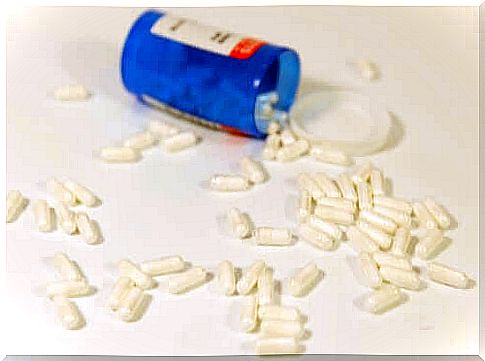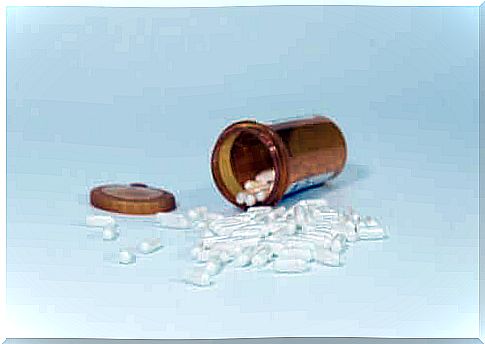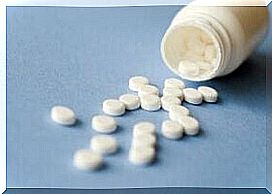Low-dose Naltrexone: The Hidden Panacea?

Over the past decade, there has been growing public interest in an opioid antagonist, naltrexone, which when taken in low doses (LDN or low dose naltrexone) has claimed beneficial effects in many diseases. However, the medical profession is not always of this opinion.
In many cases, we have heard that healing does not always consist of swallowing a pill. What doctors prescribe and what pharmacies sell us is sometimes more harmful than other more artificial treatments.
This hypothetical maxim seems to have been satisfied with the discovery – hesitant at first, and formalized and academicized, later – of this new way of taking the drug naltrexone, supposed to help the body to defend itself with its own weapons against disease. It could even, it is said, cure cancer and HIV.
The story of the rediscovery of naltrexone
Around 1985, the late Dr. Bernard Bihari (a New York psychiatrist licensed at Harvard University), according to a large number of publications on his work, realized that taking low-dose naltrexone improved the immunological response against HIV – the virus that causes AIDS.
A few years later, he discovered that this drug, which in therapeutic doses (intended for official use as an opioid deactivation aid) was used in heroin and / or morphine addiction, also benefited to cancer patients and autoimmune diseases.

According to records of Dr. Bihari’s therapeutic work, in nearly a quarter of the roughly 500 cases of various types of cancer he treated with low-dose naltrexone, he was successful in shrinking the tumor size. at least 75% of its original size.
Early in its administration and during its further development, Dr. Bihari formulated that the anticancer mechanism of LDN is probably due to its tendency to increase the number and density of opioid receptors in the cell (and, in particular , endorphins receptors, “natural opioids” or “happiness molecules”).
This makes it more sensitive to the therapeutic benefit of these molecules. The number and degree of activity of the defense cells of our immune system, as suggested, is also increased by the action of this drug.
For what ailments could this approach naltrexone be useful?
In addition to its recognized use as an anti-addictive, there are many pathologies that could hypothetically benefit from this little-known therapeutic approach:
- Cancer
- Hepatitis C
- Lupus
- Diabetic neuropathies
- Ulcerative colitis
- Dermatomyositis
- Autism
- Multiple sclerosis (MS)
- Chronic Fatigue Syndrome (CFS)
- Crohn’s disease
- HIV AIDS
- Alzheimer’s disease
- Parkinson disease
- Irritable bowel syndrome
- Hashimoto thyroiditis
- And many others…
It is truly amazing that one single substance can have an effect on so many different diseases. Although experts can sense some kind of connection between all of these pathologies, all of them are linked to inflammatory processes, and almost all of them are associated in one way or another by autoimmune mechanisms.
These mechanisms exhibit immune dysfunction, causing our own defense system to turn against our cells.
How does LDN really work?
The mechanism of action of this drug could not be simpler and more logical and at the same time more beautifully complex. Year after year, greater expanses of the biochemical pathways of which it is a part are being discovered, as well as an increasing number of benefits under multiple conditions.
In fact, one of the most recent discoveries gives it the ability to improve neuron survival after brain injury through the influence of naltrexone on cytokines that regulate inflammatory processes.
The cascade of events that would underlie these effects is, in chronological order:
- LDN temporarily inhibits the release of endorphins.
- As a result, the body responds by increasing their production as well as the amount of cell receptors that bind to these molecules.
- After the inhibitory effect of LDN, there is an increase in circulating endorphins which, in addition to promoting a feeling of well-being and an increase in libido, causes an increase in the number of our T cells.
- The imbalance of T cells, characteristic of a wide range of diseases, is thus restored by reducing the effects of the disease.

Is it safe to use? Why haven’t doctors in general heard of this therapy?
Many sources claim that using LDN, with proper precautions, is relatively safe. The indicated amounts of naltrexone vary according to the person and the pathology and must, in all cases, be guided by a specialist who also supervises their intake.
At the start of the LDN treatment regimen, symptoms such as weakness, dysesthesia, fatigue, pain and, in particular, sleep disturbances and nightmares may occur.
These side effects, in any case, should go away after a week or two and are due to the unusual amounts of endorphins present in the body.
Anyone interested in the potential use of this therapeutic variant should, as indicated, consult a specialist doctor. It is more than likely that your doctor is hardly familiar with this drug approach.
There is little interest in its study and application in the clinical field and in large pharmaceutical companies given the reduction in economic income that its commercialization would mean. It is therefore perhaps the patient himself who will provide the health information on this subject.
As we well know, there is much more than the eye can see. Likewise, there are more ways of approaching health than official medicine can offer.
While this is everyone’s responsibility, it might not be a bad idea to muster the courage to venture into exploring other, perhaps cheaper and more effective, ways of treating conditions. for which there is often little hope.









